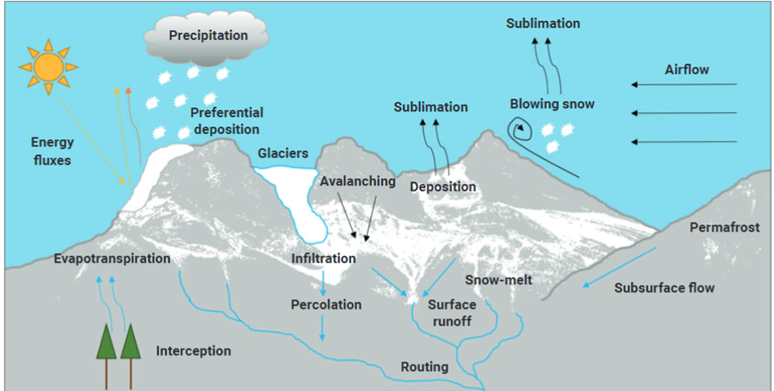- Courses
- GS Full Course 1 Year
- GS Full Course 2 Year
- GS Full Course 3 Year
- GS Full Course Till Selection
- Answer Alpha: Mains 2025 Mentorship
- MEP (Mains Enrichment Programme) Data, Facts
- Essay Target – 150+ Marks
- Online Program
- GS Recorded Course
- Polity
- Geography
- Economy
- Ancient, Medieval and Art & Culture AMAC
- Modern India, Post Independence & World History
- Environment
- Governance
- Science & Technology
- International Relations and Internal Security
- Disaster Management
- Ethics
- NCERT Current Affairs
- Indian Society and Social Issue
- NCERT- Science and Technology
- NCERT - Geography
- NCERT - Ancient History
- NCERT- World History
- NCERT Modern History
- CSAT
- 5 LAYERED ARJUNA Mentorship
- Public Administration Optional
- ABOUT US
- OUR TOPPERS
- TEST SERIES
- FREE STUDY MATERIAL
- VIDEOS
- CONTACT US
United Nations World Water Development Report 2025
United Nations World Water Development Report 2025
24-03-2025

- The World Water Development Report (WWDR) is a flagship publication of UN-Water that provides a thorough and authoritative assessment of global water and sanitation issues.
- It evaluates the state, use, and management of the world’s freshwater resources.
- The WWDR is launched every year on World Water Day (March 22), with a specific theme each year.
- Theme for 2025: Mountains and Glaciers: Water Towers
- History of World Water Day (March 22) :
- 1992: First proposed at the UN Conference on Environment and Development (UNCED) in Rio de Janeiro.
- 1993: Officially established by the United Nations General Assembly.
- The report offers policy recommendations to decision-makers, providing best practices and in-depth analyses to address water challenges globally.
- Published by UNESCO on behalf of UN-Water, with production coordinated by the UNESCO World Water Assessment Programme .

About UN-Water:
|
Key Points : United Nations World Water Development Report 2025:
Mountains and Glaciers: Water Towers
Global Water Trends (2021)
- Water withdrawals (The total amount of water that is taken from a water source for use in various sectors like agriculture, industry, and domestic use):
- Agriculture: 72%
- Industry: 15%
- Domestic use: 13%
- Water withdrawals growth: Freshwater withdrawals grew by 14% from 2000 to 2021 (average increase of 0.7% per year).
- Water stress (A situation where demand for water exceeds the available amount in a region or season):
- 25 countries (home to 1/4 of the world’s population) face extremely high water stress annually.
- 4 billion people experience severe water scarcity at least part of the year.
Progress on SDG 6: Safe Water and Sanitation (2022)
- Target 6.1: 2.2 billion people lack access to safely managed drinking water.
- 80% of these people live in rural areas.
- Target 6.2: 3.5 billion people lack access to safely managed sanitation.
- Severe issues in Sub-Saharan Africa where only 24% of the population uses safely managed sanitation.
- Target 6.3: 56% of water bodies in 120 countries are reported to have good water quality.
- Target 6.4: 58% of countries show low water-use efficiency (<US$20/m³).
- Target 6.5: Out of 153 countries sharing transboundary water bodies, only 43 have 90% or more of their transboundary waters covered by operational arrangements.
- Target 6.6: Degradation of water-related ecosystems (Ecosystems that rely on freshwater sources, such as wetlands, lakes, and rivers) continues due to pollution, dams, land conversion, overabstraction (the excessive withdrawal of water from sources), and climate change.
Mountain Areas
- Cover: 33 million km² (24% of global land excluding Antarctica).
- Population: Approx. 1.1 billion people live in mountain regions (15% of the world’s population).
- In 2017, 34% lived in urban areas, 31% in towns, and 35% in rural areas.
- Water contribution:
- Mountains provide 55-60% of global annual freshwater flows.
- Rivers like the Amu Darya, Colorado, Nile, Indus, and São Francisco depend heavily on mountain waters (up to 90% of their mean annual flow).
- Irrigation: Up to two-thirds of irrigated agriculture globally may depend on mountain waters.
Cryosphere and Water Impacts

- Cryosphere (The frozen water part of the Earth’s surface, including glaciers, ice sheets, snow, and permafrost):
-
- Glacier retreat (The process of glaciers shrinking and losing ice due to warming temperatures):

- Most mountain glaciers are thinning rapidly, with 26-41% of their mass projected to be lost by 2100 (compared to 2015).
- Many glaciers will disappear entirely due to warming.
- Glacier retreat (The process of glaciers shrinking and losing ice due to warming temperatures):
- Glacial lakes (Lakes that form from the melting of glaciers): Increasing glacial lake formation due to glacier recession. This leads to glacial lake outburst floods (GLOFs) (Sudden and catastrophic releases of water from glacial lakes due to the failure of a natural dam), creating significant disaster risks.
- Water dependency: 2 billion people depend on mountain meltwater (Water that originates from the melting of snow or glaciers in mountain regions) for freshwater supply.
Mountain Agriculture and Livelihoods
- Livelihoods: Agriculture and pastoralism are primary sources of income in mountain regions.
- 648 million people in rural mountain areas depend on these livelihoods.
- Food insecurity (Lack of consistent access to sufficient food):
- 35-40% of the mountain population experiences food insecurity, with half suffering from chronic hunger.
- 45% of mountain areas are unsuitable for agriculture, pastoralism, or forestry.
- Forests:
- 40% of mountain areas are covered by forests, which protect against landslides, regulate water flow, reduce soil erosion, and mitigate floods.
- Climate-related hazards (Natural disasters related to climate change, like droughts, floods, and extreme temperatures):
- 25% of agriculture in developing countries is affected by climate-related hazards, causing 80% of livestock and crop damage in mountain areas.
- 25% of agriculture in developing countries is affected by climate-related hazards, causing 80% of livestock and crop damage in mountain areas.
Human Settlements and Disaster Risk
- Population: About 1.1 billion people live in mountain regions (14% of the global population).
- Urbanization (The process of increasing population concentration in urban areas):
- 34% of the mountain population lives in cities.
- The urbanization rate in mountains is lower than in lowlands (66% vs. 78%).
- Disaster risks (The potential for damage and loss due to natural events):
- 3,151 GLOF events were recorded from 850 to 2022 in major glaciated regions.
- Significant economic losses (over US$56 billion) and 39,000 deaths due to natural disasters in mountain regions between 1985 and 2014.
- Adaptation finance (Funds allocated for adjusting to the impacts of climate change):
- US$187 billion needed annually for climate adaptation in mountain regions, equaling 1.3% of their GDP.
- The available adaptation finance in 2022 was only US$13.8 billion, indicating a large adaptation finance gap.
Industry and Energy in Mountains
- Water-intensive industries (Industries that use a large amount of water for production processes):
- Lithium extraction (Mining process for lithium, a key component in batteries) and cryptomining (The process of mining digital currencies like Bitcoin, which requires large amounts of water) increase water usage in mountain areas.
- 2,000 m³ of water is required to produce 1 tonne of lithium.
- Hydropower (Power generated from flowing water):
- 95% of global pumped storage hydropower (PSH) (A type of hydroelectric power generation that stores energy by pumping water to a higher elevation) is located in mountain areas, crucial for electricity storage.
- 85% of hydroelectric power in Latin America comes from mountain regions.
Mountain Ecosystems and Environment
- Biodiversity (The variety of life in a particular ecosystem):
- Mountains host 25 of the world’s 34 biodiversity hotspots.
- Forests cover 40% of mountain areas, giving way to grasslands and alpine tundra (Cold, treeless regions found at high altitudes) at higher elevations.
- Ecological pressure (The strain on ecosystems caused by human activities such as development, resource extraction, and pollution):
- 57% of global mountain areas are under intense pressure due to human activities, especially at lower elevations.
- 57% of global mountain areas are under intense pressure due to human activities, especially at lower elevations.
Regional Highlights
- Sub-Saharan Africa:
- Africa’s mountains cover 20% of its land area, with 252 million people living in mountain regions.
- 132 million rural mountain people are vulnerable to food insecurity.
- Glacier loss is projected to affect Mount Kenya and the Rwenzori Mountains by 2030 and Mount Kilimanjaro by 2040.
- Europe and Central Asia:
- In the Alps, river discharge (The flow of water in rivers) is expected to decrease by 45% due to reduced glacier runoff by 2100.
- Latin America and the Caribbean:
- The Andes provide 50% of Amazon River flow and have lost 30-50% of glaciers since the 1980s.
- 85% of hydroelectric power in Latin America comes from mountain regions.
- Asia and the Pacific:
- The Tibetan Plateau and Himalayas store more ice and snow than any region outside Antarctica and the Arctic.
- Glacier melt in the Himalayas is 65% faster than in the previous decade.
- By 2100, glaciers in the region may shrink by 30-50% under 1.5°C-2°C warming scenarios.
Hindu Kush Himalayas (HKH): Key Facts
|
- Arab Region:
- Snow contributes 50-60% of water volume in Lebanon’s rivers and springs, feeding into groundwater aquifers.
About UNESCO: Key Facts
|
|
Also Read |
|
| FREE NIOS Books | |




